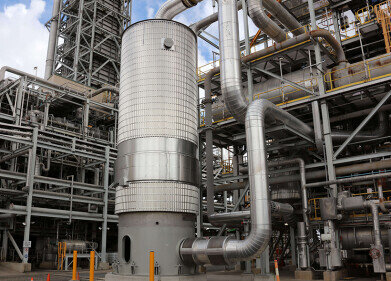-
 Climate change is affecting the quality of apples being produced
Climate change is affecting the quality of apples being produced
Air Clean Up
Indian apple farmers are being hit by climate change
Apr 23 2013
Apple farming in India has its beginnings in 1916 when a Quaker missionary first planted the American Red Delicious apple in Indian soil. Since then the production of the Red Delicious has expanded throughout the Himalayan state, with 100,000 hectares being grown in 2012. However climate change has introduced new challenges to India's apple farmers, forcing them to move their farms further up the Himalayas.
One of the most detrimental changes has been the decrease in snowfall in recent years. Snow is a vital aspect of the apple growing process as it provides the moist chill required by apple trees during dormancy. Typically Red Delicious apples need 1,200 to 1,400 hours at a temperature below seven degrees centigrade. The reduction in snowfall means that the apple trees get fewer 'chilling hours', increasing the risk of a poor crop.
Unpredictable weather throughout the spring-time is also causing issues with apple farming. Vijay Thakur, associate director at the Regional Horticultural Research Station in Mashobra, said: "The blossoming period in April should have little rain and moderate temperatures. But we're seeing temperatures swinging." An increase in hail, throughout the spring period, across more locations is creating fluctuations in production and quality for many farmers.
A recent study has shown that warmer temperatures - along with the reduced snowfall - have seen suitable low-altitude apple-growing areas reduce by up to 77 per cent between 1981 and 2007. However higher-altitude areas that were previously thought to be unsuitable - due to low temperature and dry ground - are becoming more popular for apple growing. Farmers that are staying in the lower-altitude areas are unable to adapt in order to yield better crops, as the areas they are in have now become transitional - they are becoming subtropical.
A study by Harvard University has found that the Himalayan region is becoming subject to climate change fast than most other areas of the world. During the period between 1982 and 2006, the mean surface temperature of the Himalayas rose by 1.5 degrees centigrade. This is compared to the global mean temperature of 0.6 degrees centigrade between 1975 and 2005. As well as the effects on apple crops the temperature change is also causing the Himalayan glaciers to shrink at faster rates, which in the long run could affect water supply to the subcontinent's large rivers.
Events
May 13 2024 Munich, Germany
May 23 2024 Beijing, China
May 23 2024 Beijing, China
Jun 10 2024 Algiers, Algeria
Jun 10 2024 Frankfurt, Germany













